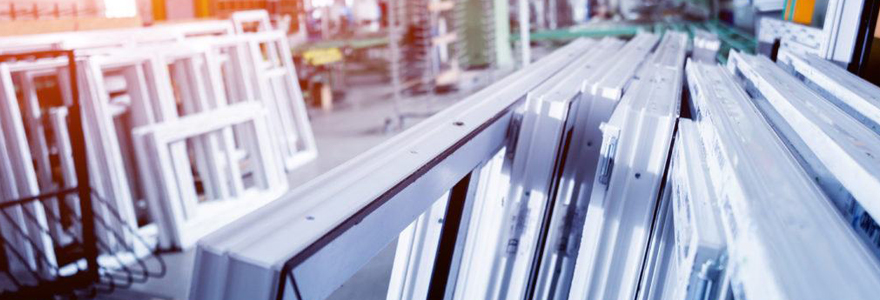PVC and aluminum exterior joinery is a growing trend in the domestic market. One reason for this is the precision engineering that goes into the manufacture of the units and the long, maintenance-free life. When it comes to choosing the best type of door, you should weigh up the pros and cons of the types available.
The advantages of an aluminum entrance door
Aluminum is lightweight, it doesn’t rust, and it is 100% recyclable—great news for the environmentalists. For use in building elements such as doors and windows, the aluminum is alloyed with other metals such as silicon and magnesium to give it extra strength.
To make a door, the aluminum alloy is extruded into hollow sections, which are then powder coated and fixed together to form the framework of the door. Infill panels can be solid or glazed, or a mixture of the two. For added comfort, extruded polystyrene can be injected to provide excellent acoustic and thermal performance.
An aluminum door will provide all the security you need with its 5-point locking mechanism, and where glazing is incorporated, this will be laminated and double leaf. Because of the powder-coated finish, there is a great range of colors available, so you are certain to find one that suits your color scheme. Click here for more information.
What about a PVC door?
A PVC door is made from polyvinyl chloride with extruded polystyrene foam fill and steel reinforcement to provide a stable, hard-wearing door with excellent thermal and acoustic properties. If you need light, then double-glazed panels can be incorporated to maintain those properties, using laminated glass for extra security. Solid panels also incorporate steel reinforcement or a thick plywood infill to prevent somebody from kicking them in. Hinges, locks, and door furniture are screwed into the steel bars cast into the PVC core and this, together with the built-in multi-point locking system makes them extremely secure.
PVC does not require painting and is therefore virtually maintenance-free—just the occasional wipe-down with a damp cloth. Although the color range is limited, there are many styles to choose from and some may come with a wood grain finish to simulate a timber door.
So, what is wrong with good, old-fashioned timber doors?
As an exterior door, timber has served us well for centuries. A poplar door was recently found in Switzerland that is over 5000 years old and there is an oak door at Westminster Abbey that dates back to 1050 AD. Traditionally, timber doors have been made from olive wood, oak or cedar, and in more recent times mahogany has been used.
Timber is versatile, has good thermal properties and can be easily cut or trimmed on site if required. Unfortunately, most timber used in door manufacture requires an applied finish, and this is where the problem arises. Whether you paint or stain a wooden door and frame, you will have to repeat the process year-on-year, no matter what it says on the tin. Wood is also prone to shrinkage and swelling, so it may need a little bit of planing in the winter leaving the door prone to drafts in the summer.
However, there is a new type of wood available now known as Accoya, which is derived from the Radiata pine tree originally from Monterey but now grown in the sustainable forests of Chile, South Africa, and Australia. Through a process known as acetylation, the cell structure of the timber is modified to create a durable product that requires little maintenance—paint or stains can be applied to provide the color you want, and they will last twice as long as on a good hardwood. The timber is resistant to insect attack and wood rot and has a low shrinkage coefficient, making it a serious contender in the external door stakes.
What should you choose for your next front door?
The main factors driving your decision should be (in no particular order):
• Aesthetics—the range of styles and colors available,
• strength and security,
• acoustic and thermal performance,
• environmental considerations,
• lifespan, and
• cost
As the front door is the focus for anyone approaching your property, appearance is all-important. There are lots of styles available as standard in all materials, but in terms of color, PVC is rather limited—'any color so long as it’s white’ seems to be the case. Aluminum can be supplied in any RAL color, but door and window manufacturers often limit the choice to three or four. Of course, timber can be stained or painted whatever color you like, and you have the choice to change it later if you want to.
Security is always an issue, front and back, and with any modern PVC or aluminum door multi-point locking should come as standard. With timber, It’s only as secure as you make it.
All fare pretty well in terms of acoustic and thermal performance—although a warped timber door would lose a few points here. Environmentally, the natural choice you would think would be timber, but that would depend on where the wood came from and how it should be treated, i.e. painted or stained and frequency. Overall, aluminum is likely to be the best choice in this respect, being 100% recyclable.
When you consider cost, you have to look at the lifetime costs, not just the cost of fitting a new door (although the initial capital outlay may be an issue for some). Putting all other considerations aside, aluminum would usually work out the most expensive and PVC the least, but you would have to shop around to find what you want within your budget.
